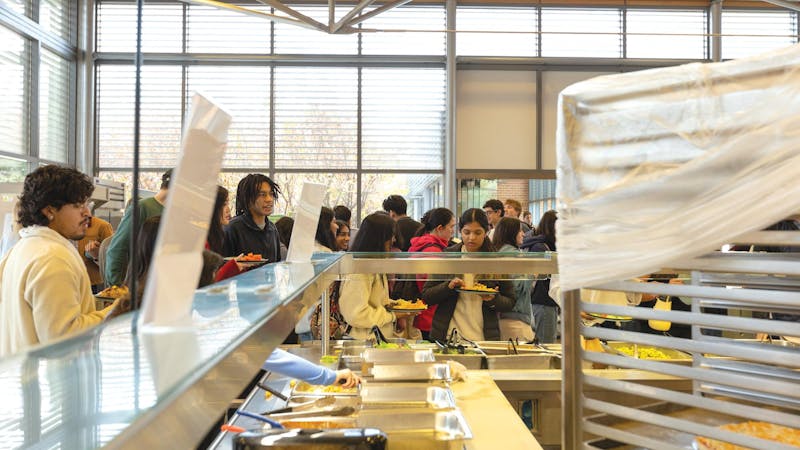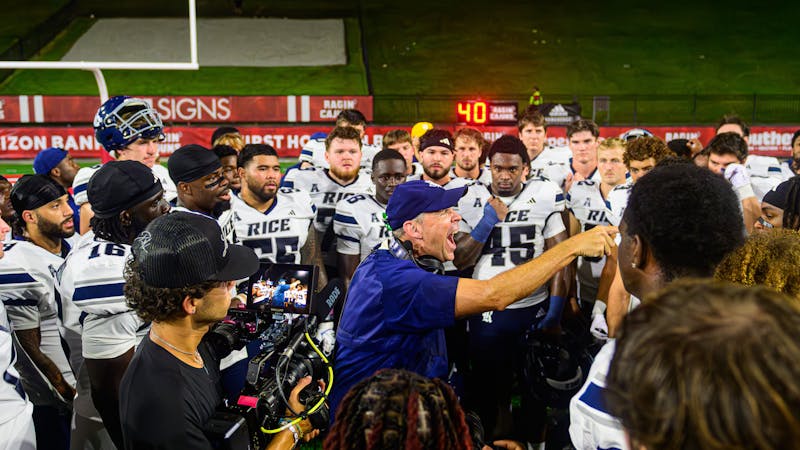In the eye of the sun
Throughout the world, the importance of the energy crisis is clear. At Rice University, the need for clean, efficient energy has prompted innovative solutions.Since 2004, the Chemistry Department has been searching for a way to build solar cells based on the model of the human retina's rods and cones in order to provide a cheaper and more efficient way to utilize solar power. In conjunction with Swansea University in Wales, Chemistry Department Chair Andrew R. Barron and student researchers have been coating carbon nanotubes with semiconductor particles to generate electricity using photons. This semester, the Chemistry Department has made advances in revolutionizing the way that solar panels are used by making them more efficient and accessible to common consumers.
Barron said the solar cell was nothing more than a scaled-down version of a retina in the way it converts light into electricity.
"But their structures are completely different, and so we were interested," Barron said. "Could we mimic the structure of the human eye?"
In doing so, Barron said he hopes the solar cell will eventually become an everyday building material that can be bought at Home Depot.
He added that most commercial solar cells are only 14 percent efficient. In theory, his retina model could achieve up to about 18-20 percent efficiency, he said. The major improvement in the retina model, however, is that it is cheaper to make by comparison and very convenient for the typical house to use, because the electrical wiring is already connected to the nanotubes, making it lighter. Most commercial cells are too heavy to be supported by a residential roof.
"When you make solar cells, it's a very energy-intensive process," Barron said. The process involves heating the materials up to 800øC. However, Barron's method takes bucky tubes, coats them onto a substrate, and then coats them in a chemical bath.
Barron said his inspiration for the project was the result of an accident. A former graduate student was doing her research in separating nanotubes under his supervision about five years ago. A friend of his, Dennis Flood, casually suggested that they shine light on the nanotubes. They discovered that the tubes produced a weak electric current.
Barron's interest in chemistry started as a childhood fascination with explosions, he said.
"I first got interested in chemistry because things went 'bang!'" Barron said. Eventually, this interest became a passion to see knowledge and application combined. To Barron, who teaches several classes in upper-level chemistry and even managerial classes for engineers, knowledge is useless unless it produces something that somebody can use.
"I've always had an interest in how you combine basic research and basic knowledge with, 'Is this good for something? Is this something somebody could use?" he said.
Now, Barron and his students are working on designing a capacitor to put on the ends of the nanotubes to store the charge and release it when enough is stored. This, in terms of structure, would be almost as efficient as the retina, Barron said.
Eventually, this research may also have medical applications, Barron said. Simulating the retina's structure may also yield a full artificial retina. For those who are blind or who have degenerative eye diseases, artificial retinas would have obvious implementations.
Barron said his research is projected into the long-term. It also depends on funding, he said. But he is hopeful that one day, every family will be able to make use of solar energy.
"If you want to put solar cells on your roof, if you can take a roll that you buy at Home Depot of solar cells, you could attach a solar cell to any building," he said.
More from The Rice Thresher

Over 1,000 students petition against new meal plan
When Konstantin Savvon opened the Housing and Dining email announcing the new unlimited meal plan, he was instantly concerned about the impact on off-campus students like himself.

Rice football wins season opener under new coach
For the first time since 2018, Rice football opened its season with a victory. Scott Abell was soaked with yellow Powerade following a 14-12 win on the road Saturday against the University of Louisiana at Lafayette, which won 10 games and made it to the Sun Belt Conference championship last season.

Acting like an athlete: Rice basketball alum takes on Broadway
Underneath Chadd Alexander’s Broadway costume, there’s ankle tape and wrist braces — same protective gear he wore as a walk-on basketball player at Rice, though now he’s performing eight shows a week in the ensemble of “Harry Potter and the Cursed Child” instead of running conditioning drills in Tudor Fieldhouse.

Please note All comments are eligible for publication by The Rice Thresher.